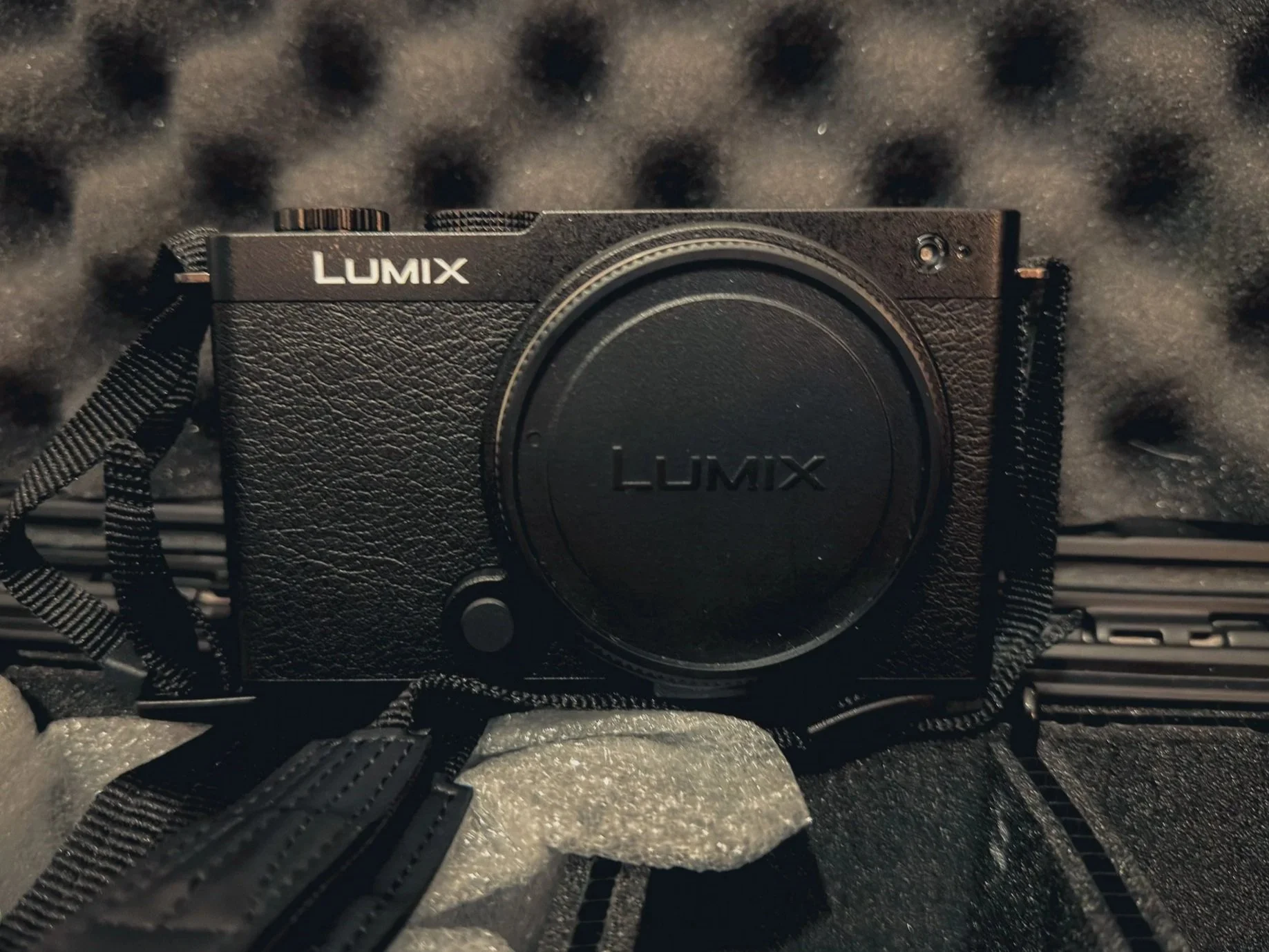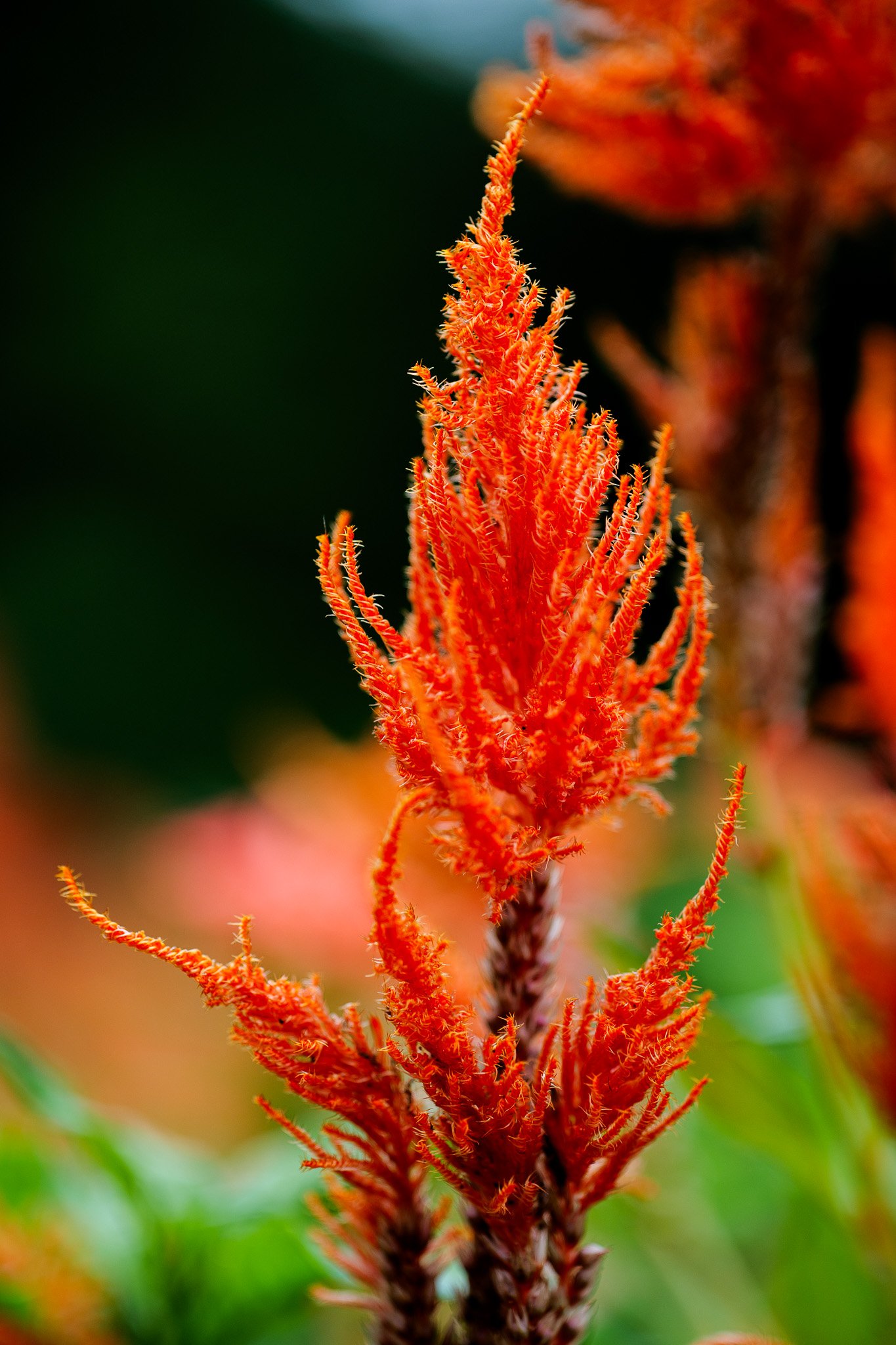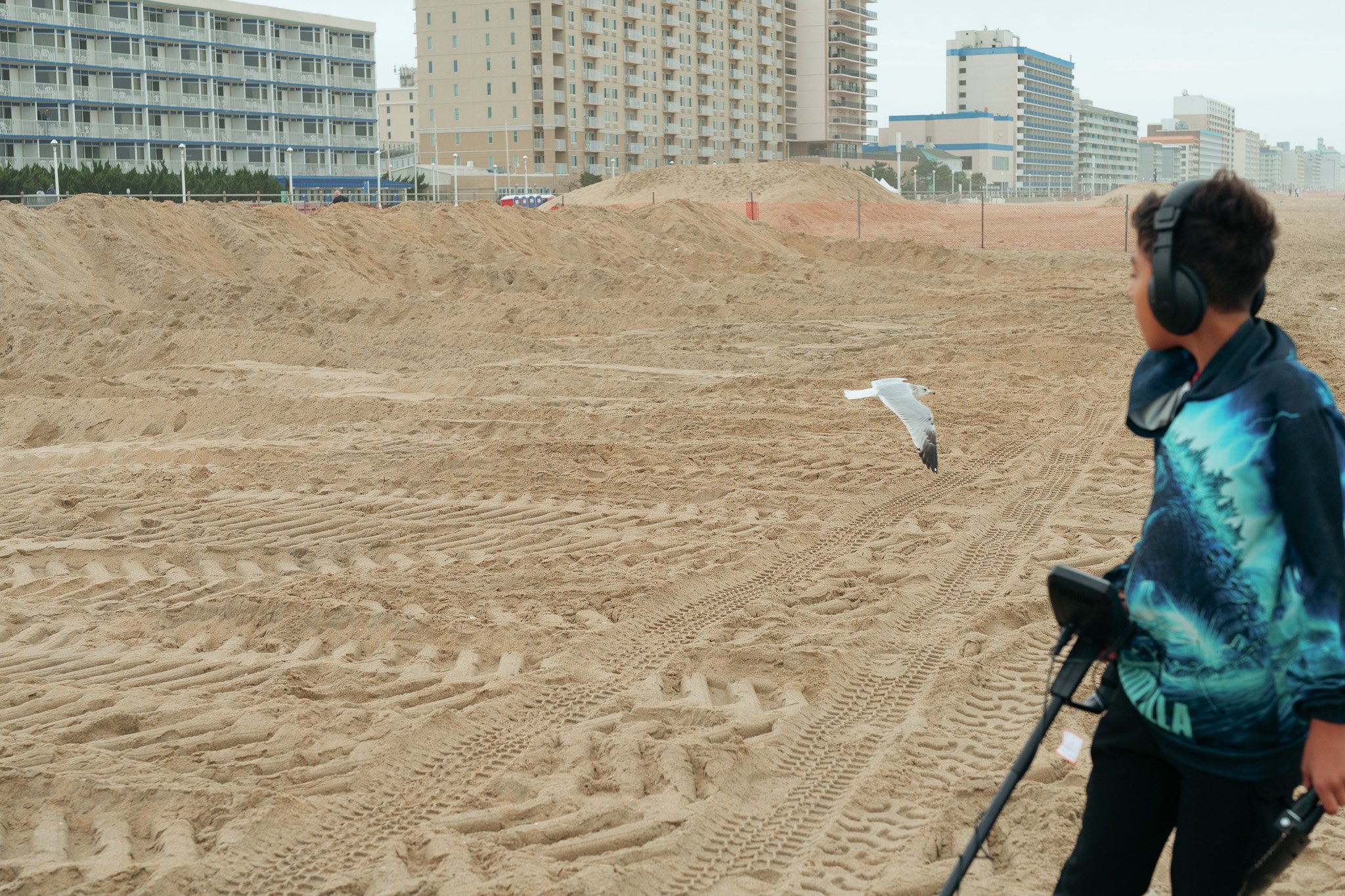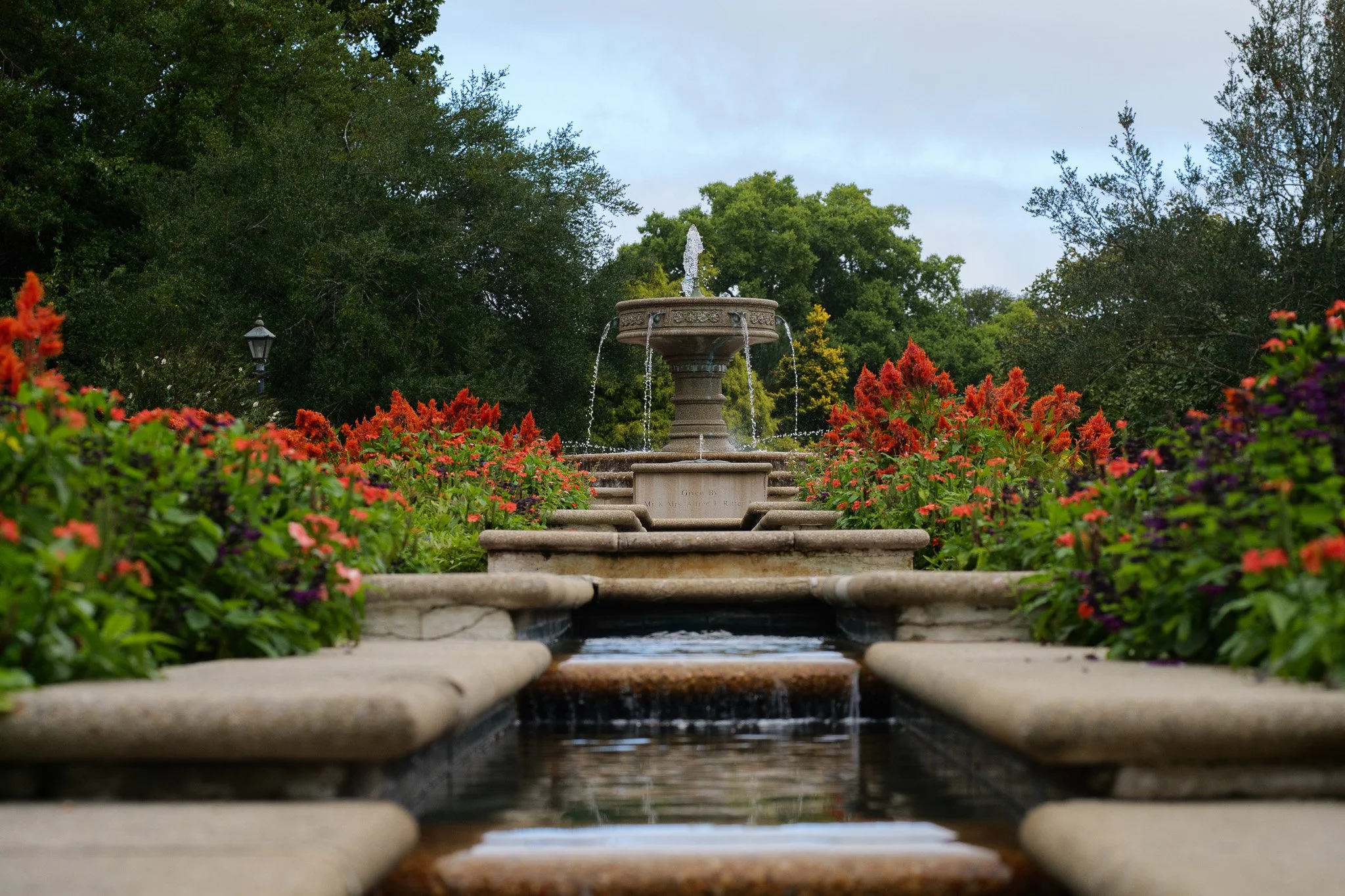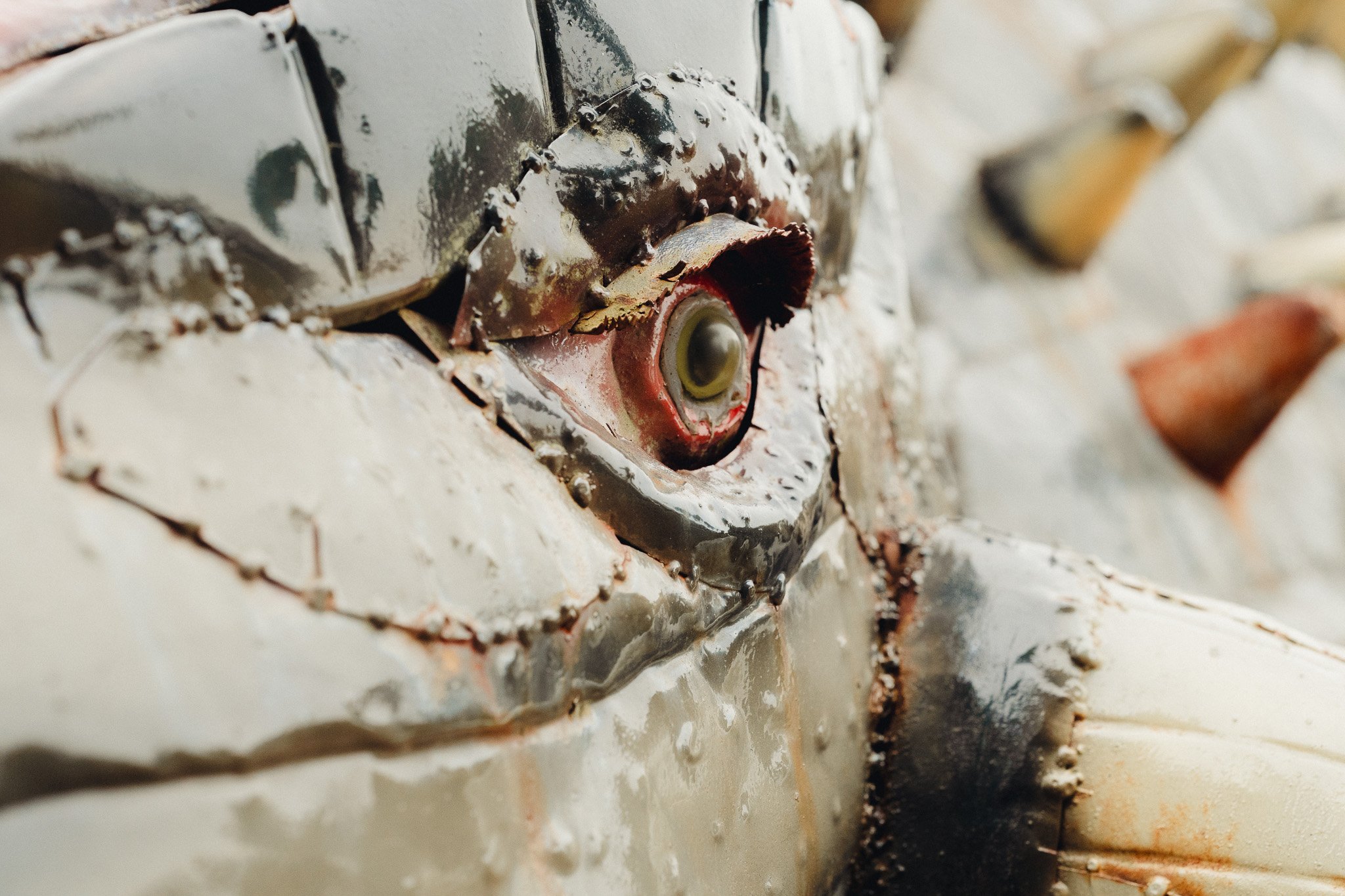A Weekend With the Panasonic Lumix S9
My Weekend with the Lumix S9
Welcome! In this post, I’ll share my thoughts on a camera I’ve been interested in trying for a little while now: the Panasonic Lumix S9. Whenever I have a long weekend off, I try to make it a point to rent a lens or camera that I have wanted to try. Although I only used it briefly, I believe I can offer valuable insights for those that might be interested in this camera.
Since its release, I have wondered if this camera could potentially replace my Leica SL3 or Q2. Not that I intend to replace them, but it’s always interesting to compare, and it often helps me appreciate what I already have. This review is, in part, a Leica user's perspective on the Lumix S9. With that out of the way, let’s get started!
Why the Lumix S9
The Lumix S9 is an interesting camera; it offers as many benefits as drawbacks. It is a compact, lightweight, full-frame, 24-megapixel interchangeable lens camera with a flip-out screen and fast autofocus. However, it lacks a viewfinder, has no hot shoe for an external viewfinder or flash, and it isn’t very ergonomic. Despite these issues, you can attach a lightweight lens from Panasonic or Sigma for an excellent everyday carry or travel camera, or opt for a heavier, high-end Leica APO Summicron-SL lens.
The Lumix S9 has great potential in my kit; with the right lens, it could be as light and possibly more portable than my Q2, while also benefiting from the excellent lenses my SL3 uses—and maybe even with better autofocus. So, this one camera might replace two, but will it?
My Weekend Setup and How I Used the S9
Over the weekend, I had both the Leica 50mm APO Summicron-SL and Leica 24-90mm Vario Elmarit available, along with several M mount lenses to test on the S9. Although I primarily used the Leica 50mm APO Summicron-SL; some might say I missed out by not using one of Lumix’s lighter lenses, but I’ve owned and sold several Lumix lenses, so I can already imagine their benefits on this camera. My main goal was to see how it would perform and handle with the lenses I already own, and minimize the desire to purchase more lenses. I also adapted my 35mm Summilux-M and Leica 100mm APO Macro Elmarit-R lenses and tested them on the S9 to get a feel for how it would feel manual focusing on it.
Over the weekend, I used the S9 on a family outing to a local farm and the beach, as well as on a solo trip to my local botanical garden, testing it directly against my Q2.
I received the Lumix S9 late on a Friday night and initially tested the camera around the house to get a basic sense of how it works. By the end of the night, I was one the fence about how much I would like it; I saw its potential, but wasn’t ready to replace anything with it.
Day 1, Farm and Beach with the Family
My first outing with the S9 was with my family at a local farm for pumpkin picking, and almost immediately my opinion of this camera started to shift. I brought the Lumix S9 along with just my Leica 50mm APO Summicron-SL and a small 2L bag. Although the lens is on the larger side, it fit inside easily and wasn’t too much trouble to take out either. This is a big plus because when I’m with my family, I don’t want to carry a large bag; I prefer to stay as light as possible. Besides, the more space I have, the more likely the kids are going to ask me to carry their things!
The lens did make the camera front-heavy; a grip would have made it easier to handle. However, for a short period (about an hour), walking around with it was manageable. I found that when I was not shooting, I either let it hang from my strap or I carried it by the lens. Waking it up was quick, and the autofocus was fast at detecting people and animals and focusing on them.
The flip screen helped me capture more creative angles. I could get down low or hold the camera farther away and still see enough to frame the shot. However, I would say the screen feels a bit flimsy, so I didn't feel comfortable leaving it out while walking around. The morning was overcast, so a glare on the screen wasn’t a big issue. But when there was a glare and it was difficult to see the screen, I was confident it would detect the subject and focus properly. By the end of the trip to the farm, I was really starting to enjoy the Lumix S9 and found it to be rather fun to use.
Later in the day, I took my son to the beach. He had received a metal detector for his birthday and had been eager to try it out. This gave me the chance to test the autofocus speed and see how I felt about the lack of weather sealing. I thought about bringing the Leica Vario-Elmarit 24-90mm, but decided against it. If you're not familiar with it, check out my review on it here. In short, it's an amazing lens that produces fantastic images, but it's very heavy, and without any grip on the S9, it just seemed like a bad idea. So, I stuck with the Leica 50mm APO Summicron.
The day remained overcast, but the wind picked up, it felt more humid at the beach. This raised my first concern about the camera. The S9 isn't weather sealed, which made me worried about sand getting into the buttons or screen hinges and whether the humidity could cause problems. Usually, with the Q, SL, or M, I don’t hesitate to take a trip to the beach, especially with the SL3. A few week earlier I used the SL3 at the beach when a hurricane was passing by and never had any reservations.
While at the beach, I made it a point to test the autofocus on the nearby seagulls. I was impressed with how quickly it could detect and lock onto the birds as they were ran along the sand or flew through the air. On continuous autofocus the camera locked on and tracked the birds with little issue. It wasn’t perfect, but it felt more responsive and a step above the Leica Q2 and the SL3. Although when trying to single out and focus on a single bird within a group it was somewhat difficult to switch between them; however, spending more time with the camera could help alleviate this issue.
Eventually, the wind picked up more, and the air became even more humid, so I decided it was time to put the camera away. This was a rental, and I didn’t want to risk damaging it. Even if I owned it, I don’t think I would have taken any chances and it would have still been relegated to the camera bag for the rest of the outing.
Day 2, A Rainy Day Kept the S9 Away
Day 2 started off with me reconsidering how much I liked the S9. The weather was unpredictable, it became cold and rained off and on. So I kept the S9 at home and instead picked up a weather-sealed camera instead. I grabbed my Sony A7R2, with more confidence and went for a walk to test some lenses with it.
Later that night, I sat down and played with the LUMIX S9, using my manual 35mm Summilux lens, spending more time exploring the camera’s menu system to better understand how it works. In my opinion, the menu isn’t great, but it’s not the worst either. I researched online the features and options listed in the menu, but sometimes had trouble finding them again in the menu system. I’m sure that with more time, familiarity would make it easier. Still, this experience reminded me why I prefer the Leica menu system more.
Day 3, A trip to the Botanical Gardens, Directly Testing Against the Q2 and Trying Out Manual Lenses on the S9.
Fortunately, on the third and final day, the weather cleared, allowing for more real-world testing with this camera. I again selected the Leica 50mm APO Summicron-SL but also brought a my Leica 100mm Macro APO Elmarit lens for manual focus and macro shooting. I also wanted to directly compare it to my Leica Q2 since both are compact full-frame cameras, looking to see if the Lumix S9 could potentially replace it. Both cameras are capable of delivering great images, so my focus was more on the experience of using them—did one feel more comfortable to hold while walking? Was I more inclined to shoot more with one? Was one more enjoyable to use? And so on.
To focus on one camera at a time, I planned a route through the Botanical Gardens, I would start with the S9 and walk to a specific point, then return the same way, using the Q2. I intentionally took photos of some of the same objects, but I didn’t want to limit myself to that alone and left room for shooting whatever caught my attention.
I began testing the S9 with the Leica 100mm APO Macro lens attached to try manual focusing with a flip screen. Relying on focus peaking the experience was fine for a while, when I checked the photos I took. The flip screen was initially useful, making it easy to frame shots from different angles, which the Q2 couldn't do. However, after some time, certain issues appeared.
While walking, the bright sunlight made it hard to see the screen, affecting my ability to view the focus peaking. Eventually, it became too frustrating, so I switched to the 50mm lens and used autofocus instead. However, glare wasn't my only issue with the screen.
The screen flips to the side of the camera, which I don’t particularly like. When shooting in portrait mode, it's convenient, but in landscape mode, I have to look down and to the side, which feels awkward. The flip-out screen also seems somewhat fragile, so I kept it closed while walking around to avoid accidental bumps, then flipped it out when framing a shot. Repeating this quickly became frustrating. In contrast, my SL3 has a more durable flip screen that stays aligned with the camera when open, so I don’t worry about bumping it into anything. However, if I did accidentally bump it, I believe it could withstand minor impacts without breaking.
Switching to the Q2
When I reached the end of my path, I swapped the S9 for the Q2, and I was surprised to find that I immediately enjoyed the experience much more than I had with the S9. Granted, this is a camera I have used extensively, so it feels more familiar, but it seemed much quicker to shoot with the Q2 than with the S9. Adjusting the shutter speed, aperture, and ISO felt faster and more natural. Being able to look through a viewfinder again was a welcome change; a flip-out screen is great, but looking through a viewfinder feels more natural and allows me to see around the shot I am composing more effectively. So, although the S9 offers a lot, the Q2 won out for me. Do I believe one camera is superior to another? Certainly not; it largely depends on personal preferences. If I had to choose only one, the S9 would be the most logical option.
Conclusion
When it was time to return the camera, I did so with little regret. I had an enjoyable experience with it; I don’t think that I would replace any of my current cameras with it. I would miss the viewfinder and the durability of the SL3, in addition, larger lenses handle better on it. Breaking the flip screen on the S9 would always be a concern that would sit in the back of my mind. The compact size of the S9, along with its ability to swap lenses and a flip screen, aren't enough reasons for me to give up the weatherproofing and durability of the Q2, along with its fantastic Summilux lens.
I hadn’t mentioned the battery or ISO performance yet, but in closing, I want to note that given how much I used the screen, I found the battery life to be quite good compared to the SL3 and Q2. Both days, I took the camera out and used it quite a bit; the battery still had well over 50% battery remaining. As for ISO performance, I didn’t specifically test it at extremely high ISOs, but I did shoot at ISOs of 4000-6000 and still got very usable images.
Would I recommend this camera? Absolutely, many people do enjoy this camera. I’ve read many posts from Lumix S9 users who enjoy this camera, and seen some amazing shots that were taken with it. If I came across a used version in good condition for around $700-$800, I would seriously consider purchasing it and adding it to my collection.
But I wouldn’t recommend replacing a more robust camera with this one, but if you are starting in photography, this is a good camera to begin with at a reasonable price. However, the Lumix S5 II might offer some extra features for a slightly higher price.
If you are looking for a compact travel camera with a full-frame sensor that can utilize any L or M mount lenses you already own, then it’s hard to find a better option currently available.
Affiliate Links
I would greatly appreciate if you would consider using my affiliate links below when purchasing camera equipment. This will help me keep the site going and allow me to do more reviews in the future.
I am not affiliated with Lensrental.com, but this is where I rent my equipment. If you're in the United States and considering renting cameras, lenses, or other equipment, please use the code below and give them a try. It will provide me with a small discount on future rentals, which will lead to more reviews!
https://share.lensrentals.com/x/8BG6mh
Sample Gallery
